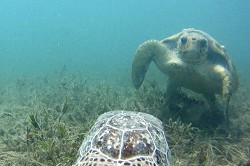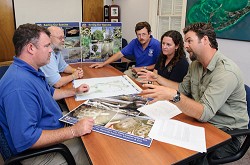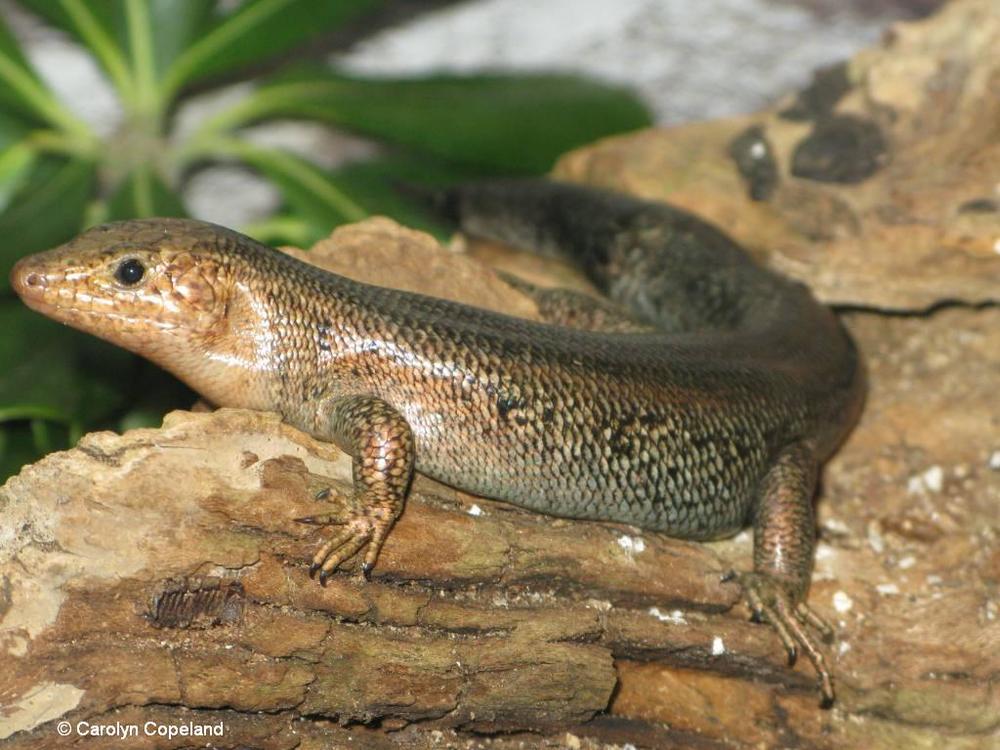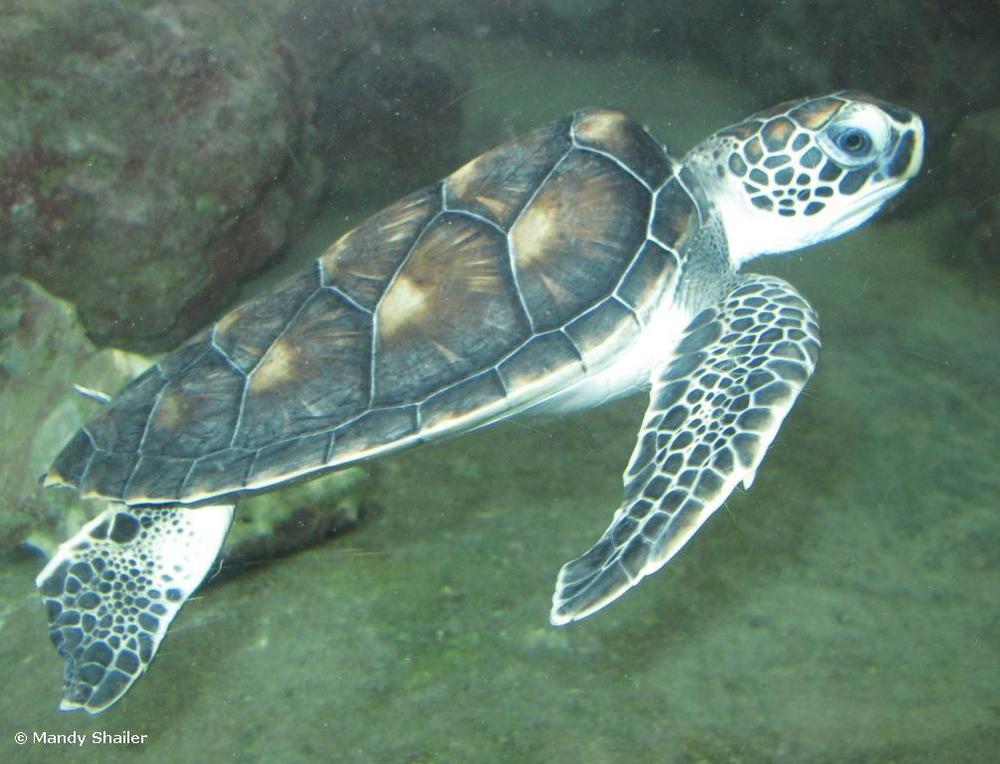The spring 2020 edition of envirotalk contains articles on lionfish control efforts, the Gov. Laffan’s Fern recovery project, and will show you how you can participate in developing a marine spatial plan for Bermuda. You can also find out why there are no local bananas at the moment.
Happy World Wetlands Day 2018
The theme for World Wetlands Day 2018 is ‘Wetlands for a Sustainable Urban Future’. This is particularly relevant to our Ramsar Site at Pembroke Marsh. Did you know that Pembroke Marsh is home to a pea clam and freshwater limpet only found in Bermuda?
Freshwater wetland at Pembroke Marsh
World Wildlife Day - March 3rd
Green Heron, Spittal Pond
On Monday, March 3rd 2014, the UN will mark its first World Wildlife Day to recognise global efforts to halt wildlife trafficking.
Why not celebrate by visiting our Bermuda Species Page to see some of our beautiful Bermudian wildlife, or read our tips on how to attract wildlife to your garden?
Happy World Wildlife Day!
Critter cams aim to help our understanding of green turtle
By Simon Jones,
Bermuda Sun
Small video cameras will be attached to green turtles as part of a conservation project to protect the species and its grazing habitat.
The pioneering programme will see American scientists join forces with local conservation experts to tag and monitor the feeding habits of the protected marine animal.
 Close encounter: Footage from a critter cam that could help us better understand our green turtles
Close encounter: Footage from a critter cam that could help us better understand our green turtles
And it will give them a ‘turtle’s eye view’ of how the species interact in the waters off Bermuda.
American experts, Jim Fourqurean and Derek Burkholder from Florida International University will arrive on the island a week today and join a six strong team from the Department of Conservation Services.
They will be joined by a third US scientist, Jud Kenworthy, who recently retired from Nationals Oceanic and Atmospheric Administration in North Carolina on August 1.
The team is planning to start the two-week project on July 30 at the Chub Head site, which is around seven miles off the West End.
The study will involve nine video cameras being tethered to the seabed, while a further three cameras will be attached to the back of green turtles that are captured.
The cameras will only be fixed to larger turtles and will pop up to the surface after less than a day in the water.
Marine Conservation Officer, Sarah Manuel, said: “For the past six years the Bermuda Benthic Habitat Mapping, Monitoring and Assessment Programme has been studying seagrass beds around Bermuda.
“At our Chub Head monitoring site we have looked specifically at the effects of grazing on the condition and health of the seagrass Thalassia testudinum.
“In order to adequately conserve both green turtles and their essential grazing habitat we need to improve our understanding of this dynamic relationship in Bermuda.”
The project will help scientists estimate turtle populations as well and monitor grazing habits.
Three turtles will also be fixed with satellite tracking devices that will last around 300 days during the programme.
Ms Manuel added: “We will be very conservative and careful with the size of the turtle that we choose to attach the cameras too.
“They will have to be over a certain size and we will always look after the animal’s best interests.
“If the green turtles at Chub Head are not large enough for the animal borne video we would like to attach the cameras to some of the larger green turtles caught as part of Bermuda Turtle
Project.
“This project is all about creating a better understanding of these creatures and helping to protect their future in Bermuda. We will use nets to capture the turtles in strict accordance with guidelines set down by the Bermuda Turtle Project.”
'Lifeboat' project aims to save our endemics
Simon Jones
The Bermuda Sun News
WEDNESDAY, APRIL 25:
This September, six pairs of Bermuda skinks will be collected from one of their last strongholds in Castle Green team: The conservationists behind Bermuda’s Lifeboat Projects (clockwise from left) Drew Pettit, Director of Conservation Services; Dr Robbie Smith, curator at the Natural History Museum; Robin Marirea, head zoo keeper; Alison Copeland, biodiversity officer and Mark Outerbridge, researcher for the Bermuda Zoological Society. *Photo by Kageaki Smith Harbour.
Green team: The conservationists behind Bermuda’s Lifeboat Projects (clockwise from left) Drew Pettit, Director of Conservation Services; Dr Robbie Smith, curator at the Natural History Museum; Robin Marirea, head zoo keeper; Alison Copeland, biodiversity officer and Mark Outerbridge, researcher for the Bermuda Zoological Society. *Photo by Kageaki Smith Harbour.
The critically endangered rock lizards will be carefully loaded onto a plane and flown to Chester Zoo in the UK.
Their mission is simple: to secure the future of Bermuda’s only indigenous land vertebrate.
The Bermuda skink project is the latest in a series of ‘Lifeboat’ initiatives organized by conservationists in Bermuda to safeguard the island’s rarest and most endangered species.
Over the past 10 years it has seen killifish sent to the Vienna Zoological Gardens, Bermuda land snails sent to London Zoo and the Governor Laffan fern sent to Henry Doorly Zoo in Omaha.
This work has helped to create ‘repositories’ of Bermudian species on the brink of extinction across the globe.
And it means they could be brought back to Bermuda if the natural population died out.
Drew Pettit, Director of Conservation Services, said: “Bermuda is one of the remotest oceanic islands in the world.
“As a result we have had quite a few endemic species ranging from insects, marine animals through to birds and reptiles.
Vulnerable
“We should have more endemics, given our age and isolation but we believe a series of sea level fluctuations through the ages has stemmed some of this evolution.
“Regardless of that, we are particularly vulnerable due to physical isolation and having all our eggs in one basket.”
In the past there have been many recorded extinctions of plants and animals in Bermuda due to loss of habitat, climate change, disease and the introduction of pests such as rats.
Mr Pettit added: “We know through fossils, historical documents and recorded observations that Bermuda used to have fireflies, an endemic flightless grasshopper, an endemic duck, an endemic crane, an endemic hawk as well as an endemic land tortoise — which disappeared some 300,000 years ago.
“We also used to have four types of endemic snail, while now we only have one.
“Fossils of a short tailed albatross are found on Green Island, Coopers Island and other dunes along South Shore.”
The Department of Conservation Services, together with the Bermuda Aquarium, Museum and Zoo and its small team of Conservation Officers, has been working on developing ‘recovery plans’ and Lifeboat Projects since 2002.
There are currently five different projects ongoing, at varying stages in Bermuda.
Mr Pettit told the Sun: “A lifeboat can be defined as a small boat kept on a ship for use in an Rare: The latest Lifeboat Project will see a number of critically endangered Bermuda skinks collected from Castle Harbour and flown to Chester Zoo in the UK to help secure their future. emergency.
Rare: The latest Lifeboat Project will see a number of critically endangered Bermuda skinks collected from Castle Harbour and flown to Chester Zoo in the UK to help secure their future. emergency.
“This same philosophy is being used for the conservation of our unique and threatened species.
“While every effort is being made to safeguard the species that make Bermuda unique, we are using a precautionary strategy to relocate or export small populations of our threatened species to less vulnerable areas or institutions.
“Our first priority is to ensure the survival of endemic species, which are unique to Bermuda.
“Once they are gone they are gone, as they are found nowhere else in the world. You can’t just bring in a new batch to restock the shelves.”
Conservationists work at both a local and an international level to help protect the island’s most endangered species.
Mr Pettit added: “On a local level – we transplant or relocate small populations from one particularly vulnerable area to other areas in order to increase the island range by spreading the risk out across the island.
High risk
“The Department has found that many of our endemic species have now been pushed into only a couple of places which are at high risk of failure.
“A good example is the endemic Lover’s Lake Killifish which until recently survived in only one pond.
“Now populations have been trans-located to two other ponds to safeguard their survival.
“On an international level we also work with international Zoos and Botanical Gardens who are willing to help us preserve and breed these species.
“In return they get to display in their institutions some of the rarest species in the world.
“So working with other international agencies Bermuda, at no cost to the island, has been able to save small populations of species for the future.”
“Our endemic species make us unique to the rest of the world and by preserving our unique species we combat a growing trend in the decline the world’s biodiversity which is seeing the disappearance of large numbers of species.”
The next chapter in the ongoing battle to save Bermuda’s unique population begins with the departure of the Bermuda skinks later this year.
It is estimated that there are less than 5,000 of these critically endangered species in Bermuda today.
They are found only on islets in Castle Harbour and there are a few fragmented populations along South Shore.
The kink is Bermuda’s only endemic terrestrial vertebrate. Its future survival will depend heavily on the six rock lizards heading across the Atlantic Ocean.
Mr Pettit added: “Our head zoo keeper has already visited the facilities at Chester Zoo with the help of an international grant.
“Once they are established we will periodically send over more Skinks to broaden their genetic diversity.
“We hope that this lifeboat project will prove successful, as others before it have.”
If you think you have seen any of the species listed in this article email conservation@gov.bm or visit www.conservation.bm to leave a message.
Cahow Population Reaches 101 pairs for the first time since the 1600's
First cahow of 2011
The Department of Conservation Services today (March 22, 2012) is pleased to announce that for the first time since its rediscovery in 1951 the population of Bermuda’s National Bird, the critically endangered Cahow (Pterodroma cahow), has passed the landmark number of 101 nesting pairs. A fitting milestone to celebrate Bermuda’s 400th anniversary of colonization.
Abundant when Bermuda was first discovered, the ground burrowing Cahow was quickly decimated by introduced predators such as rats, pigs, dogs and cats, and hunting by the early settlers. During a major famine in 1621 Governor Moore sent one hundred and fifty of the most weak and sick settlers “to Cooper’s Isle, where were such infinite numbers of the birds called "Cahowes", which were so fearless, they might take as many as they would…they so much consumed and wasted by carelessness and surfeiting, many of them (settlers) died ” from over indulgence. The Cahow soon disappeared from the historic records and it was thought to have become extinct. In 1951 the Cahow was miraculously rediscovered on several small rocky islets but the entire population consisted of only 18 nesting pairs, with the entire population only producing 7 to 8 chicks annually.
For the last 50 years the Cahow Recovery Program has been one of Bermuda’s priority protected species projects. Now managed by the Terrestrial Conservation Section of the Department of Conservation Services the team works hard to control predators, build artificial nest burrows, and carry out research to better understand the Cahow and enable it to recover. With this assistance the Cahow continues to move towards becoming a self sustaining population. Last year the Cahow increased to 98 nesting pairs producing a record 56 fledged chicks. The 101 nesting pair mark was met this year illustrating that the species continues to move from strength to strength.
Jeremy Madeiros (Senior Terrestrial Conservation Officer) reports that “the Recovery Program has reached a critical milestone, but the ultimate objective is to increase the number of nesting Cahows to at least 1000 nesting pairs. That is the only point at which it can be down-listed from “critically endangered” to “threatened”. 1000 pairs is still a small number for the entire planet, as the Cahow is completely endemic or unique to Bermuda, nesting no-where else on Earth.”
Increased penalties for harming Bermuda's protected species
 Today, Bermuda's House of Assembly passed amendments to the Protected Species Act that will increase penalties for harming Bermuda's protected species. The changes include a new maximum of a $25,000 fine or two years imprisonment for offenses related to species falling under the Category 1 classification, which include the Cahow, Spotted Eagle Ray, Bermuda Skink and the Green Turtle.
Today, Bermuda's House of Assembly passed amendments to the Protected Species Act that will increase penalties for harming Bermuda's protected species. The changes include a new maximum of a $25,000 fine or two years imprisonment for offenses related to species falling under the Category 1 classification, which include the Cahow, Spotted Eagle Ray, Bermuda Skink and the Green Turtle.
For the full Minister's statement please go to the article found in BerNews.



